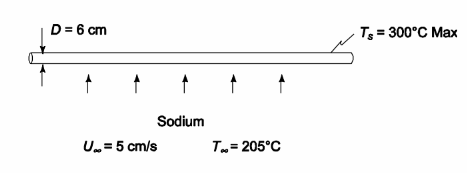One possible explanation for a galaxy's type invokes the angular momentum of the protogalactic cloud from which it formed. Suppose a galaxy forms from a protogalactic cloud with a lot of angular momentum. Assuming its type has not changed as a result of other interactions, we'd expect this galaxy to be
A) an irregular galaxy.
B) an elliptical galaxy.
C) a spiral galaxy.
D) a torn and incoherent galaxy.
C) a spiral galaxy.
You might also like to view...
Two windowpanes are being compared for their heat conduction. The second windowpane has twice the width, twice the height, and twice the thickness of glass of the first windowpane.How would the heat flow through the second windowpane compare to that of the first
a. They both would have the same amount. b. The second one would have double that of the first. c. The second one would have quadruple that of the first. d. The second one would have eight times that of the first.
A nuclear reactor fuel rod is a circular cylinder 6 cm in diameter. The rod is to be tested by cooling it with a flow of sodium at 205°C and a velocity of 5 cm/s perpendicular to its axis. If the rod surface is not to exceed 300°C, estimate the maximum allowable power dissipation in the rod.
GIVEN
• Cylinder in a cross flow of liquid sodium
• Cylinder diameter (D) = 6 cm = 0.06 m
• Sodium temperature (T?) = 205°C
• Sodium velocity (U?) = 5 cm/s = 0.05 m/s
• Maximum rod surface temperature (Ts) = 300°C FIND
• The maximum allowable power dissipation Gq
ASSUMPTIONS
• Steady state
• Turbulence in the sodium flow approaching the rod is low
• Heat generation per unit volume in the rod is uniform
SKETCH

Projectile Motion: A ball is thrown horizontally from the top of a tower at the same instant that a stone is dropped vertically. Which object is traveling faster when it hits the level ground below if neither of them experiences any air resistance?
A. It is impossible to tell because we do not know their masses. B. the stone C. the ball D. Both are traveling at the same speed.
The radius of the earth is 3963 mi. Which one of the following numbers is closest to the surface area of the earth? (1.0 mi = 1609 m)
A) 4.9 × 107 m2 B) 1.3 × 1014 m2 C) 2.6 × 1014 m2 D) 5.1 × 1014 m2